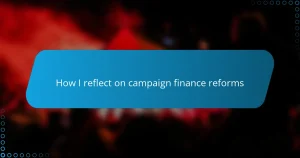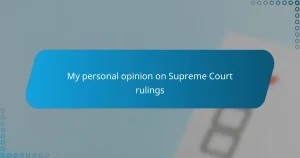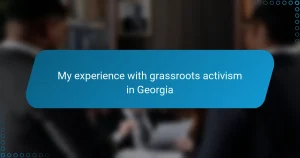Key takeaways
- Election integrity is vital for public trust in democracy, requiring a balance between transparency and security.
- Challenges such as varying state laws, misinformation, and resource disparity hinder the electoral process.
- Effective monitoring tools, like audit software and clear dashboards, enhance transparency and accountability.
- Public sharing of election observations can empower communities and improve understanding of the electoral process.
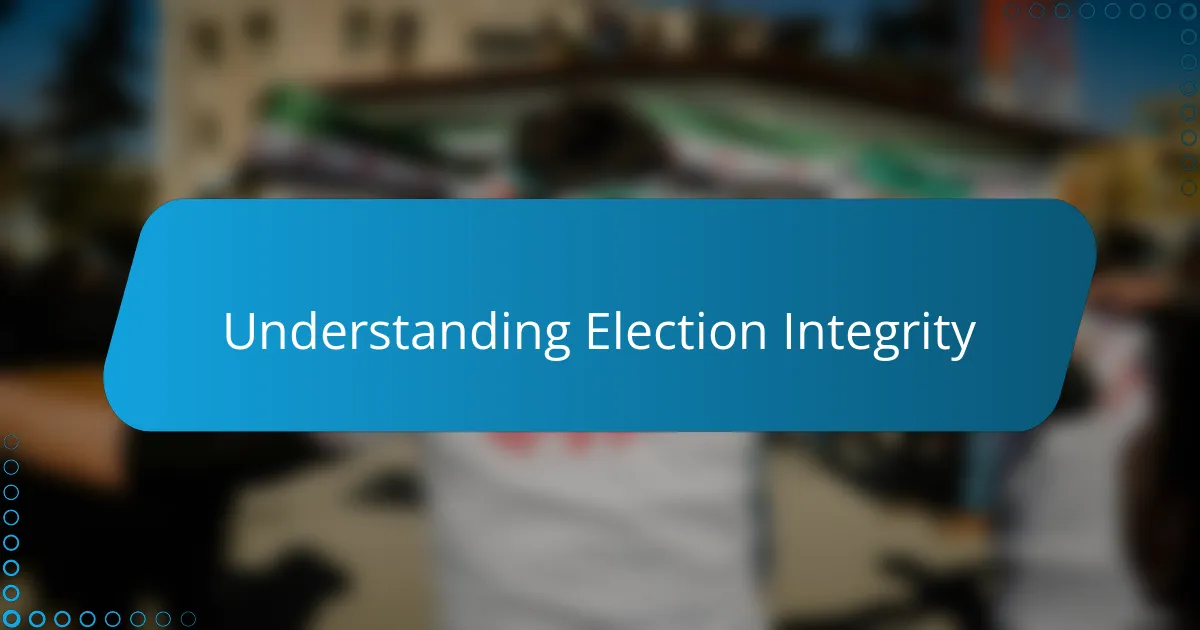
Understanding Election Integrity
Election integrity, to me, means more than just a process; it’s the foundation of trust between the public and our democracy. I often wonder, how can we claim to have free and fair elections if there’s even a hint of doubt clouding the system? This question has driven my commitment to closely monitor every aspect of voting procedures.
In my experience, understanding election integrity involves recognizing the delicate balance between transparency and security. It’s about ensuring that every vote counts exactly as cast, without interference or manipulation. When I observe election day operations, I’m reminded that these safeguards protect not only the votes but also the voices behind them.
Have you ever thought about what might happen if people lose faith in election outcomes? I’ve seen firsthand how skepticism can lead to division and unrest. That’s why grasping the full scope of election integrity isn’t just an academic exercise for me—it’s a necessary step to preserving the core of American democracy.
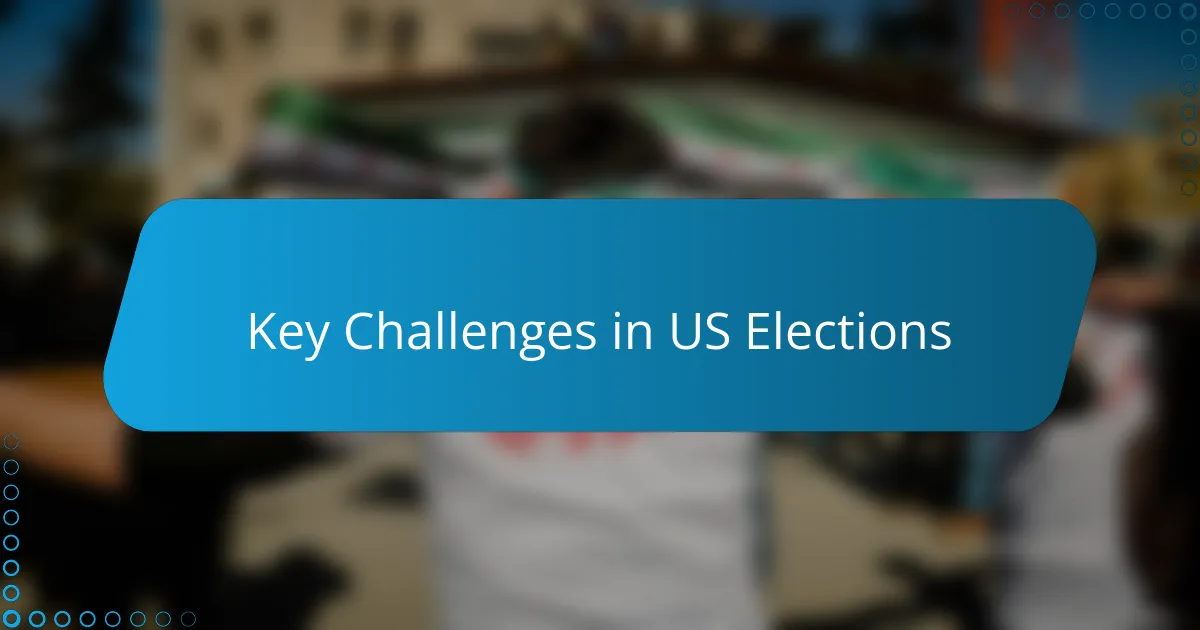
Key Challenges in US Elections
One challenge I consistently see is the maze of varying state laws that often confuse voters and poll workers alike. It makes me wonder—how can we expect smooth, uniform elections when every state seems to play by its own rulebook? This patchwork of regulations creates gaps where mistakes and misunderstandings can easily slip through.
Another issue that hits close to home is the persistent threat of misinformation. I recall times during election seasons when conflicting reports and rumors made it hard even for seasoned observers like myself to separate fact from fiction. When voters aren’t sure what to believe, doesn’t that taint their confidence in the system?
Then there’s the matter of resource disparity. I’ve visited polling places where overwhelmed staff and outdated equipment almost seemed like a recipe for disaster. It’s frustrating to see dedicated workers doing their best despite the lack of support, raising the question: Are we truly prioritizing the infrastructure that underpins our democracy?
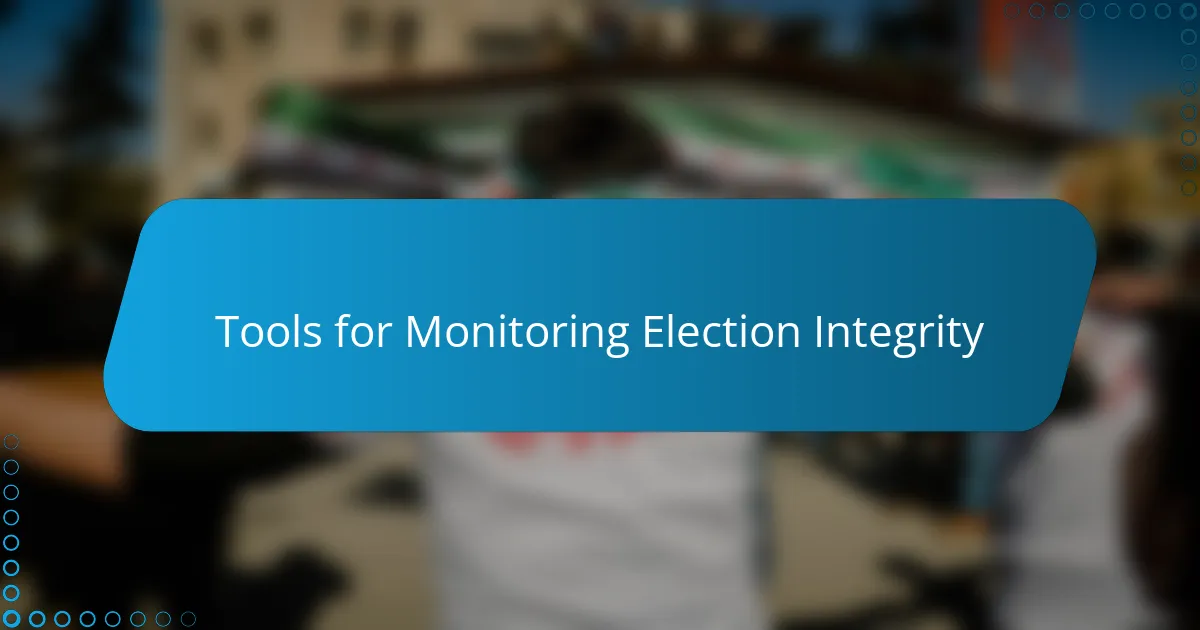
Tools for Monitoring Election Integrity
When I started monitoring elections more closely, I quickly realized that having the right tools makes all the difference. From voter registration databases to real-time reporting apps, these resources help me track inconsistencies and flag potential issues as they happen. Without them, staying on top of the many moving parts would feel like trying to catch smoke with my bare hands.
One tool I find invaluable is the audit software that cross-checks vote tallies against paper ballots. Watching this process unfold in real time reminded me why audits are more than just a checkbox—they’re a critical line of defense against anomalies. It’s one thing to hear that votes were counted correctly; it’s another to see the verification steps backing that claim.
But tools alone aren’t enough if they aren’t accessible and user-friendly. I often ask myself—how can election transparency improve if the average citizen, or even election watchers like me, struggle to understand the data? That’s why I appreciate dashboards that present clear, timely information. They transform abstract numbers into a story everyone can follow, making election integrity a shared responsibility rather than a niche concern.
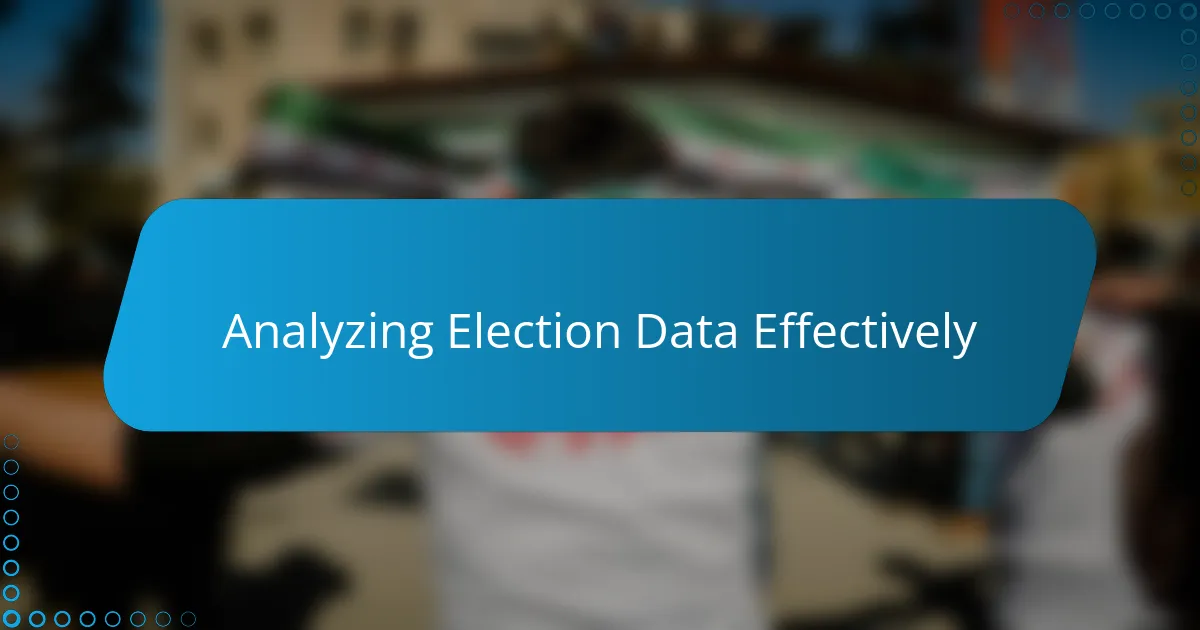
Analyzing Election Data Effectively
Diving into election data, I always remind myself that numbers don’t lie—but they can be misleading if taken out of context. Have you ever stared at a spreadsheet full of election results and felt completely lost? I sure have, which is why breaking down data into manageable chunks and looking for patterns or irregularities is my go-to strategy. It’s like piecing together a puzzle that reveals the truth beneath surface-level figures.
I’ve found that comparing current data against historical trends often shines a light on unexpected spikes or drops that deserve closer scrutiny. For example, during one election cycle, noticing a sudden surge in absentee ballots from a specific precinct made me dig deeper—and that curiosity led to uncovering reporting delays that could have easily been mistaken for fraud. Moments like that remind me that effective analysis isn’t just about numbers; it’s about reading the story they tell.
But here’s a challenge: data without context can confuse even the most seasoned observers. That’s why I rely heavily on cross-referencing multiple sources—polling place reports, voter rolls, and audit logs—to confirm my findings. It’s a time-consuming process, but it reassures me that what I’m seeing is accurate, not just an anomaly or technical glitch. After all, election integrity depends on thoroughness, not shortcuts.
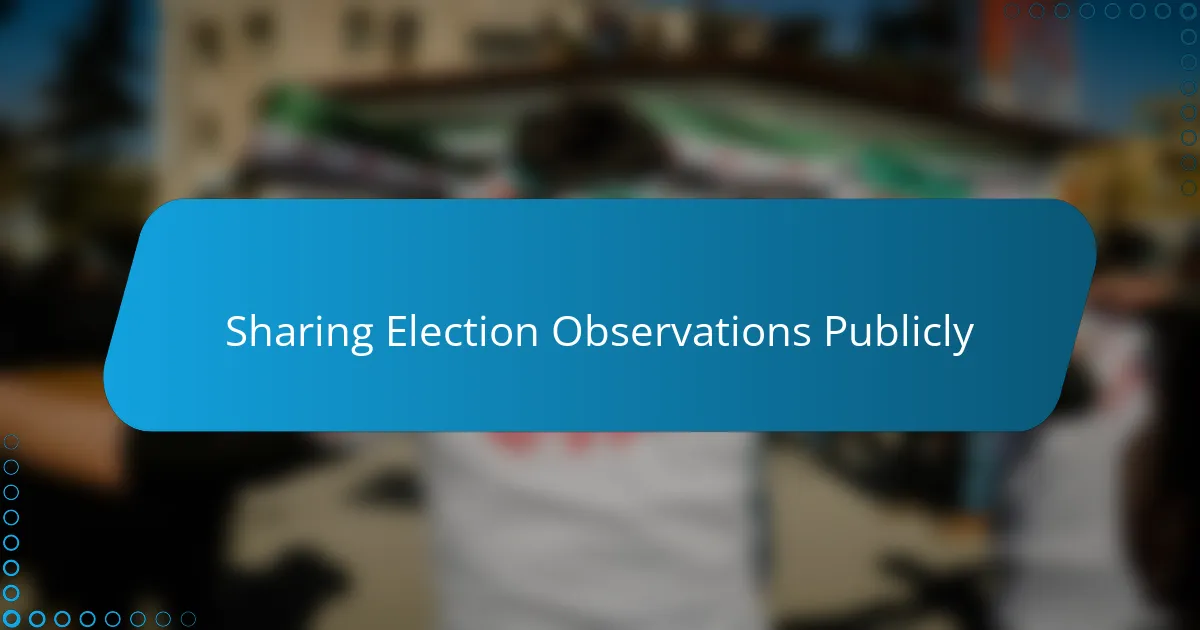
Sharing Election Observations Publicly
Whenever I share my election observations publicly, I think about how transparency can either build trust or invite skepticism. I’ve posted detailed reports online after long election nights, knowing that laying everything out in the open invites questions—but it also invites accountability. Have you noticed how even the smallest detail, when shared, sometimes sparks a conversation that helps clarify what really happened behind the scenes?
There was a time I shared early vote counts that showed irregularities in one precinct. The initial reaction from some was disbelief, but opening the data to public view encouraged local officials to investigate promptly. Moments like that remind me why public sharing isn’t just about reporting—it’s about empowering the community to take part in safeguarding democracy.
I often wonder, though, how accessible my observations really are. That’s why I try to pair my reports with simple explanations and visuals. People don’t need to be election experts to understand the bigger picture, and when I hear feedback from readers who say, “Now I get why this matters,” it feels like all the effort to share publicly is worth it.
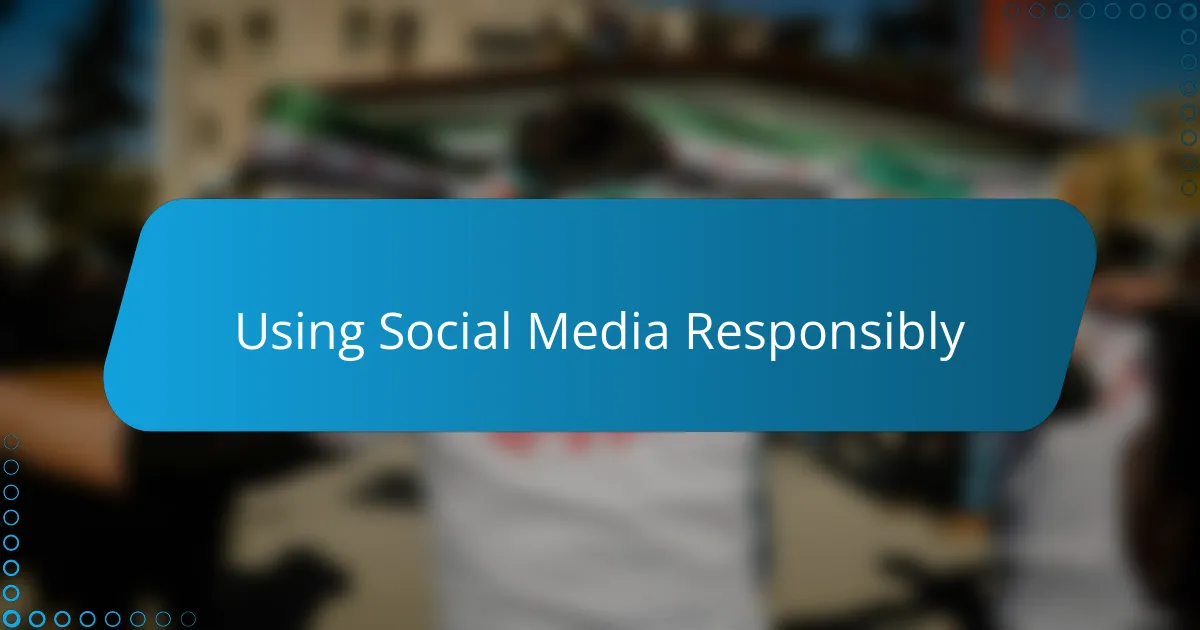
Using Social Media Responsibly
I’ve learned the hard way that social media can be a double-edged sword when it comes to election integrity. It’s tempting to share every questionable post or viral claim I stumble upon, but I always stop to ask myself—am I helping or just adding noise? Sometimes, the most responsible choice is to pause, verify, and share only what’s backed by solid evidence.
One time, I saw a misleading video spreading quickly that falsely accused a polling site of tampering. Instead of reacting impulsively, I dug into official statements and local reports before commenting. That patience not only kept me credible but also helped calm a community on edge. Doesn’t it make you think how often quick sharing can fuel mistrust rather than understanding?
I also remind myself to promote respectful dialogue online. Social media often feels like a shouting match, but I try to model thoughtful conversations by asking questions rather than launching accusations. From my experience, encouraging curiosity and fact-checking can do more good than joining in the echo chamber of outrage. After all, monitoring election integrity means being part of a solution, not just highlighting problems.
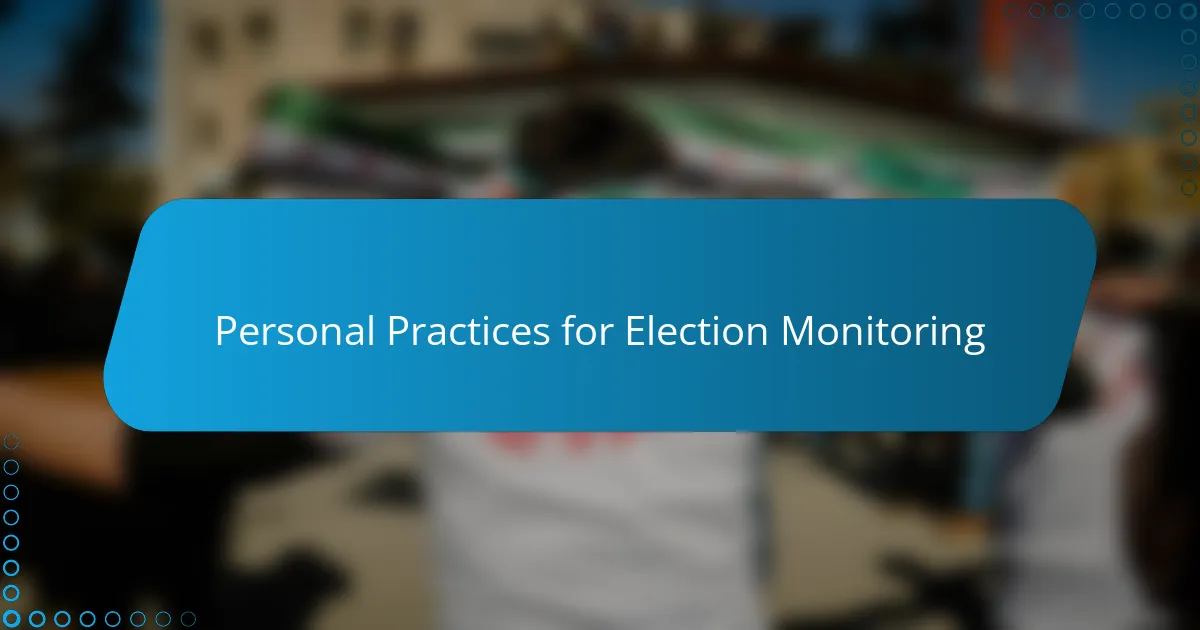
Personal Practices for Election Monitoring
One practice I’ve adopted is arriving early at polling locations to observe setup and protocols before voting begins. This quiet moment often reveals how seriously election workers take their responsibilities—and sometimes surfaces issues that wouldn’t be obvious once the crowd arrives. Have you ever noticed how those first few interactions can set the whole tone for election day? Observing with fresh eyes helps me catch details others might miss.
I also make it a point to engage directly with poll workers and voters when possible, not just as an observer but as a listener. Asking simple questions about their experiences opens up insights about challenges on the ground that raw data never shows. I recall one election when a seasoned poll worker confided in me about a confusing new form—her frustration made me realize how procedural changes can unintentionally trip up the very people ensuring integrity.
Finally, documenting everything meticulously is nonnegotiable for me. Whether it’s photos of posted instructions, notes on unusual activity, or timestamped logs of observed events, this record becomes my factual backbone. Sometimes, reviewing these notes later uncovers patterns I didn’t notice in the moment. Have you ever found that writing things down not only clarifies what happened but also calms that nagging doubt that lingers after election day? For me, it’s an essential part of feeling confident in the process.
